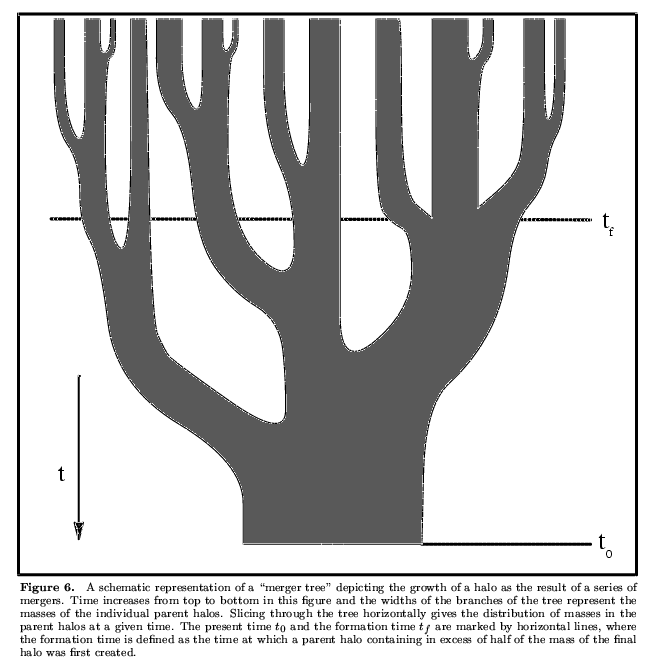
In order to collapse, remember, a parcel of gas must
be
Jeans
unstable. So let's calculate the Jeans mass immediately after
recombination,
when structure can first collapse.



So putting these numbers in, we find that just after recombination, the Jeans mass is
MJ ~ 2x106 Msun
which is just about the mass of a dwarf galaxy. Anything smaller than that could not collapse. Anything larger than that could, but more massive objects are characteristically less dense, and will take longer to collapse.
As larger structure develops, it collapses
gravitationally
and the formal Jeans equation does not really apply. Rather than
massive
clouds collapsing as one (monolithic collapse),
we instead have ensembles of smaller objects (ie protogalaxies or
galaxies)
falling together to form larger structures.
This is a "merger tree",
describing the evolution of structure in a hierarchical universe (from
Lacey and Cole MNRAS 262 627 1993)

So when did this object
form?
Can we watch this kind of structure form? Numerical simulations of cosmology! Here is the collapse of a portion of the universe which becomes a galaxy cluster. It is shown in comoving coordinates, where the expansion of the Universe is scaled out of the picture.
This hierarchical collapse continues on smaller scales to form galaxy
clusters.